2D 2D character art
2D character art is a critical element in many creative projects, including video games, animation, comics, and advertising. Well-designed 2D characters can capture the audience’s attention, convey a range of emotions and expressions, and add depth and personality to the project. Polydin Studio is a professional game art studio that specializes in creating 2D character art for a range of projects. With a team of experienced artists, our studio has the expertise to create characters that are tailored to the project’s needs and goals. With a focus on quality, attention to detail, and respecting deadlines, our artists make every character in your projects a memorable experience for your audience.
2D Character art Services
Realistic character is the art of details. That’s why our artists rely on reliable references and dedicate maximum consideration to every aspect of character design to create visually striking, believable, and relatable 2D characters that resonate with audiences and enhance the overall project’s quality.
Anime 2D characters have a unique style which is often characterized by large eyes and exaggerated hairstyles, and are typically designed to convey a range of emotions and expressions which our artists are capable of bringing them to life perfectly.
We have the expertise to quickly produce delightful cartoon characters that match any style, making them suitable for any project regardless of the theme. Our commitment to quality and attention to detail is what sets them apart and ensures that our clients’ expectations are exceeded.
Looking for an outstanding and creative style with a touch of magic? Whether it is a character or creature, our team of dedicated artists make sure your fantasy character leaves your audience in awe and excitement.
Our Technological Expertise in 2D CHARACTER ART DESIGN










2D CHARACTER ART DESIGNERS AT YOUR SERVICE
We have the following experts on board who would be glad to create perfect 2D character art for you
FAQ
What is 2D character art design?
2D character art design refers to the creation of two-dimensional visual representations of characters, often for use in video games, animations, comics, or other forms of media. The design process typically involves sketching or drawing the character in a flat, two-dimensional format, and then coloring and shading the image to bring it to life.
The art style of 2D character design can vary widely, from highly stylized and cartoonish to more realistic or anime-inspired. Some key elements of good 2D character art design include attention to detail, strong use of color and shading, and an understanding of the character's personality and backstory.
Who is 2D character artist?
A 2D character artist is a professional who specializes in creating two-dimensional visual representations of characters for use in various forms of media, such as video games, animations, comics, and more.
2D character artists are typically skilled in drawing and painting techniques, as well as digital art software and tools. They work closely with writers, game designers, and animators to create characters that fit the style and tone of the project, while also conveying the personality and backstory of the character.
What skills do you need to be a 2D artist?
To become a successful 2D artist, you will need to develop a range of skills in both traditional and digital art techniques. Here are some of the key skills that are typically required for 2D artists:
- Strong Drawing skills
- Understanding of color theory
- Knowledge of composition and layout
- Digital art software proficiency
- Collaboration and communication skills
- Attention to detail
By developing these key skills, aspiring 2D artists can build a strong foundation for a successful career in the field.
Which software is best for 2D character design?
There are several software options available for 2D character design, and the choice of software depends on the artist's preferences and the requirements of the project. The most popular software for 2D character design are:
- Adobe Photoshop: Photoshop is a widely used digital art software that offers a range of tools for drawing, painting, and editing. It is particularly popular among digital artists and is suitable for creating 2D character designs.
- Adobe Illustrator: Illustrator is a vector graphics software that is often used for creating logos, illustrations, and other types of artwork. It is also suitable for creating 2D character designs.
- Procreate: Procreate is a digital painting app that is designed for use on the iPad. It is popular among artists for its intuitive interface and powerful drawing tools.
- Clip Studio Paint: Clip Studio Paint is a versatile digital art software that is designed for both 2D and 3D art. It offers a range of tools for drawing, painting, and animation, and is particularly well-suited for creating 2D character designs.
- Krita: Krita is a free and open-source digital painting software that is designed for use on Windows, Mac, and Linux. It offers a range of tools for drawing, painting, and animation, and is a popular choice among digital artists.
What are the steps of 2D character design?
The steps of 2D character design can vary depending on the artist and the specific project, but here are some common steps that are often involved:
- Concept and ideation: The first step is to develop a concept for the character, including their backstory, personality, and visual appearance. This can involve sketching out rough ideas, brainstorming with other team members, and researching visual references.
- Sketching: Once the concept is developed, the artist will begin sketching out rough ideas for the character's design. This can involve drawing the character from different angles, exploring different poses and expressions, and experimenting with different clothing and accessory options.
- Refining the design: Based on the sketches, the artist will then begin to refine the design, adding more detail and developing a more polished version of the character. This can involve making decisions about the character's proportions, facial features, and other details.
- Coloring: Once the design is finalized, the artist will begin adding color to the character. This can involve creating a color palette that fits with the character's personality and visual style, and using shading and highlighting techniques to add depth and dimension to the character.
- Finalizing the character: Once the coloring is complete, the artist will finalize the character by adding any necessary finishing touches, such as highlights, shadows, or special effects. The final character design can then be saved and exported for use in the final product, such as a video game, animation, or illustration.
How Can I find best studio for 2d character design?
Start by doing a search online for studios that specialize in 2D character design. Look for studios that have a strong portfolio of work, positive reviews from clients, and a team of skilled artists and designers. Ask colleagues, friends, and other professionals in the industry for recommendations. They may be able to provide valuable insights into studios that they have worked with or have heard good things about.
Once you have identified potential studios, reach out to them to learn more about their services, rates, and availability. Ask to see their portfolio and discuss their approach to 2D character design. This can help you assess their skills and determine whether they are a good fit for your project.
How is 2D character art different from 3D character art?
2D character art and 3D character art diverge primarily in their approach and visual representation. 2D character art involves creating characters on a flat, two-dimensional plane, often with a focus on illustration and hand-drawn techniques. It emphasizes artistic interpretation and stylization. In contrast, 3D character art employs three-dimensional computer graphics to craft characters with depth and volume. It involves modeling and texturing within a digital environment, allowing for realistic lighting, shading, and dynamic perspectives. While 2D art relies on techniques like painting and drawing, 3D art leverages specialized software and technology to create lifelike characters that can be manipulated from various angles.
Are there different art styles for 2D character designs?
Yes, there are various art styles for 2D character designs. These styles encompass a wide range, from cartoonish and realistic to anime, pixel art, chibi, watercolor, minimalist, and more. Each style has its own unique visual characteristics and appeals, allowing artists to create characters that fit the mood, genre, and artistic vision of a project. The choice of art style can significantly influence the overall look and feel of the characters and the entire project.
Certainly! There exists a diverse array of art styles for 2D character designs. These encompass a broad spectrum, spanning from whimsical and lifelike to anime, pixel art, chibi, watercolor, minimalist, and beyond. Each style boasts distinct visual attributes and attractions, affording artists the capacity to shape characters in alignment with a project's tone, genre, and artistic direction. The decision regarding an art style bears substantial weight in shaping the characters' overall appearance and, by extension, the entire project's ambiance and impact.
2D character art and 3D character art diverge primarily in their approach and visual representation. 2D character art involves creating characters on a flat, two-dimensional plane, often with a focus on illustration and hand-drawn techniques. It emphasizes artistic interpretation and stylization. In contrast, 3D character art employs three-dimensional computer graphics to craft characters with depth and volume. It involves modeling and texturing within a digital environment, allowing for realistic lighting, shading, and dynamic perspectives. While 2D art relies on techniques like painting and drawing, 3D art leverages specialized software and technology to create lifelike characters that can be manipulated from various angles.
How can I outsource 2D character design to Polydin Studio?
Outsource your 2D character art by reaching out to us at info@polydin.com. We'll respond within 24 hours. Once we have your requirements, our artists will start researching and creating a reference board before diving into the character design process. We'll keep you in the loop at every stage, welcoming your feedback.
Is it possible to animate 2D character art?
Yes, it is entirely possible to animate 2D character art. Animation involves giving the illusion of movement to static images, and 2D character art can be brought to life through various techniques. Traditional frame-by-frame animation entails creating a sequence of individual drawings, each slightly different from the previous one, to simulate motion.
Additionally, rigging and skeletal animation involve breaking down the character into components and using a digital skeleton to manipulate and animate them. This method is efficient for maintaining consistency and streamlining the animation process. Software tools like Adobe Animate, Toon Boom Harmony, or even digital art programs like Clip Studio Paint offer features specifically designed for animating 2D characters.
In recent years, advancements in technology have facilitated the integration of 2D character art into game development and interactive media, providing a dynamic and engaging user experience.
What is the future of 2D character art in the industry?
Looking ahead, the future of 2D character art in the game industry is intricately linked with the integration of AI tools and advanced technologies. Artificial Intelligence is gradually becoming a game-changer in the creative process, offering tools that can assist artists in various aspects of character design. AI-driven tools can streamline the workflow by automating repetitive tasks, enabling artists to focus more on creative aspects and ideation. This fusion of human creativity and AI assistance holds the potential to expedite the character design process, allowing for more iterations and experimentation.
Moreover, AI can contribute to the personalization of gaming experiences. With the ability to analyze player behavior and preferences, AI algorithms could dynamically adjust 2D character art, tailoring visuals to suit individual player experiences. This level of customization has the potential to create more immersive and engaging gaming worlds, where characters evolve in response to player interactions. As the gaming industry continues to leverage the power of AI, 2D character art is poised to evolve into a realm where the collaboration between human artists and intelligent tools opens up new dimensions of creativity and player engagement.


The Importance of 2D Character Design for Games
Character design in games is not merely about aesthetics; it’s a fundamental aspect that can deeply influence player experiences and perceptions. Characters serve as the linchpin of storytelling, acting as conduits through which players engage with the game world. A well-crafted character can evoke a spectrum of emotions, from empathy to exhilaration, anchoring players in the narrative and driving them forward through gameplay challenges. Moreover, characters are often the primary vehicles for conveying themes, messages, and moral dilemmas, enriching the gaming experience with depth and resonance.
The Role of Characters in Game Design
Characters are the beating heart of game design, fulfilling multifaceted roles that extend far beyond their visual appearance. Beyond their narrative functions, characters shape gameplay mechanics, serving as avatars through which players interact with the game world. Whether as heroic protagonists, cunning adversaries, or quirky sidekicks, characters define the tone and atmosphere of a game, imbuing it with personality and charm. Through their actions, dialogues, and relationships, characters drive the story forward, providing context for players’ decisions and actions.
How does Character Design Contribute to the Overall Gaming Experience?
Character design is a cornerstone of the gaming experience, influencing player engagement, emotional investment, and immersion in the virtual world. Memorable characters leave indelible impressions on players, forging strong emotional connections that endure long after the game is over. From iconic heroes to dastardly villains, well-designed characters captivate players’ imaginations, fueling their desire to explore and conquer new challenges. Moreover, distinct character designs enhance gameplay clarity, facilitating players’ understanding of mechanics and objectives while contributing to the game’s visual identity. Ultimately, thoughtful character design elevates the gaming experience, transforming it into an unforgettable journey filled with adventure, discovery, and meaningful interactions.
LET'S TALK ABOUT YOUR PROJECT
We’d love to chat with you about your project and provide you with a quote. Simply fill out the form below and we’ll get back to you as soon as possible.

